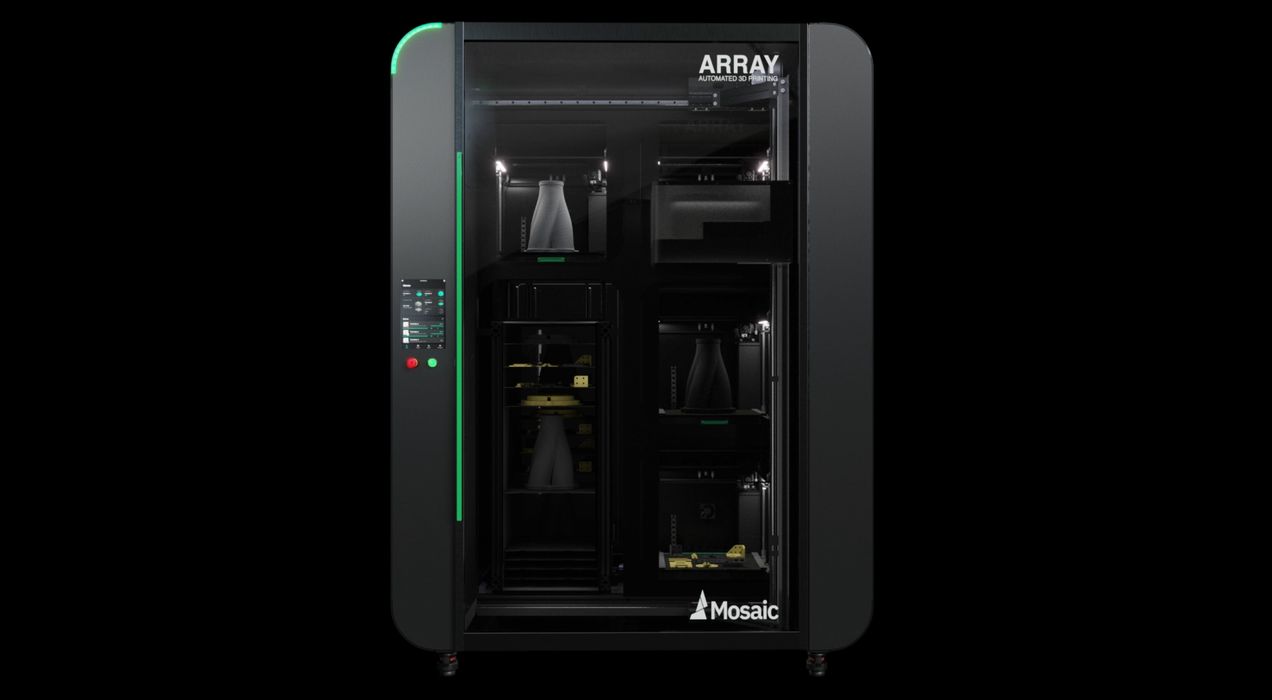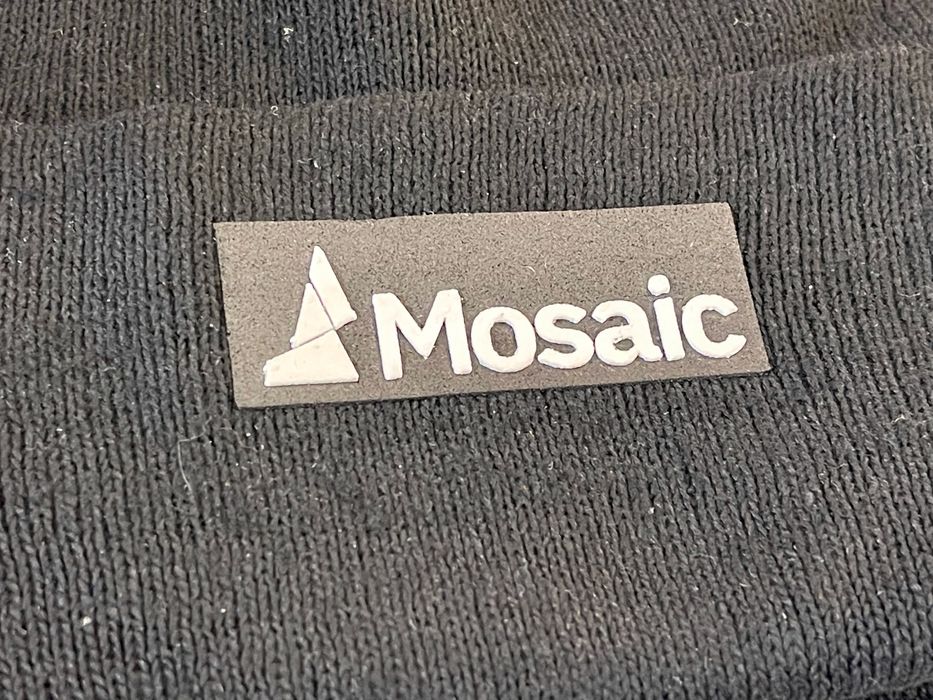
I had a chat with the nice folks from Mosaic Manufacturing to learn more about their latest endeavors.
You may be familiar with Toronto-based Mosaic Manufacturing: they are the folks that invented the Palette. The Palette is an amazing on-the-fly filament splicer that can enable multicolor 3D printing by creating a filament with color swaps in all the right places.
You might think that the Palette would be their core product. It was for a few years, but the company, while still producing the Palette, is moving on to bigger and better products.
The company has developed not just a powerful professional 3D printer, the Element, but also an array system to operate multiple printers. Unsurprisingly, it is called the “Array”.
Those products target production operations, which is just about the farthest application you can see from multicolor filament. But it is no doubt a vastly greater market.
Mosaic Manufacturing’s foray into this very new market is still early, but it is showing considerable signs of success. We were told there would be around ten units “in the wild” a few months ago.
These early users would no doubt be finding the bugs in the system before they ramp up production.
Mosaic Manufacturing representatives told me they have arranged for a contract manufacturer to produce the devices in higher volumes, so it would seem the company is ready for a large expansion of sales.
Indeed, the company hinted at “considerable interest” from companies looking at the Array for production applications.
This is certainly driven by the excellent specifications of the machine:
- Eight material pods per printer
- Four printers per Array
- Huge 355 x 355 x 355 mm build volume
- Four Palettes per Array with eight materials each
- Forty print beds
- Robotic Arm
- Engineering materials, including PEEK, ULTEM, PEEK, PC
The robotic arm is able to unload completed print beds, and replace them with fresh beds for continuous printing.
The Palettes are capable of dynamically creating color filaments, but in this scenario they can knit together multiple material types, which makes for some very interesting print capabilities. This approach can also make use of soluble support material, enabling the production of highly complex geometry parts.
The result of all this is an incredible machine that can continuously print production parts with engineering materials with hardly any human intervention. Mosaic Manufacturing said a single operator could run 250 3D printers with their system.

If that wasn’t enough, they’ve also discovered a way to 3D print text on fabric in a durable, production fashion using the system. Here you can see an example of this application.
While the Palette is an accessory to a 3D printer, the Array and Element are in a whole other class of device. It’s quite impressive how Mosaic Manufacturing has made this massive jump into production equipment.
